My first children’s novel, Candy, is out now from Scholastic UK, and forthcoming soon in several European countries. This is as surprising to me as it must be for anyone who realises my last book in the UK was about Adolf Hitler, but there you go! Candy is about a 12 year old girl detective, Nelle Faulkner, in a world where chocolate has been made illegal and children now run the candy gangs…
Which got me thinking of some of the classic heroines in children’s books that continue to have such a resonance to this day, and who must have been in the back of my mind as I was writing! No doubt I’ve missed many—Meg from A Wrinkle in Time? George from the Famous Five? Anna from Mister God, This is Anna? Dorothy? Hermione? You tell me!—but these five in particular stood out for me as I was writing.
Momo, from Momo by Michael Ende
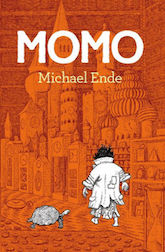 Last year I went to Bavaria, and I got to visit Ende’s home town. There’s not much there now—a small plaque on a building marks where he was born—but there is a lovely little public park filled with his creations, including the very amphitheatre from Momo, and the giant turtle, Cassiopeia.
Last year I went to Bavaria, and I got to visit Ende’s home town. There’s not much there now—a small plaque on a building marks where he was born—but there is a lovely little public park filled with his creations, including the very amphitheatre from Momo, and the giant turtle, Cassiopeia.
Most English-language readers probably know Ende from The Neverending Story, but his books, which are rich, surrealist fantasies, are much more than that. Of all of them it is Momo I keep going back to, about the little girl who has to fight the Men in Grey who steal people’s time…
Like the very best children’s novels, Momo packs philosophical and moral questions into a fantastical framework of danger and excitement. And as the adult world is slowly corrupted by the Men in Grey, it is Momo alone who stands for what’s right, a moral compass in an unjust world. I think I definitely drew on that idea for Nelle, and that same sense of the adult world as a place of moral compromise for Candy. Like Momo, Nelle in is determined to do the right thing, whatever the cost.
Ende himself, of course, knew better than most how fragile childhoods are. Growing up as the Nazis rose to power, he joined the resistance movement as a teenager, fighting the SS. His subsequent books, I think are, even at their lightest, informed by the knowledge that the “Nothing” (as the plague threatening the land of Fantastica in The Neverending Story is called) is never far away, and that it takes courage and imagination to fight it.
Pippi Longstocking, from Pippi Longstocking by Astrid Lindgren
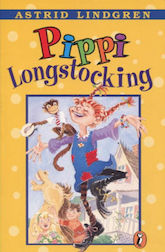 A beloved childhood classic, Pippi lives alone in a big old house, eats messy spaghetti whenever she wants, has a pet monkey, superhuman strength, and treasure from her father, a sea captain lost at sea. Together with Lindgren’s Master Detective Kalle Blomkvist, the two have definitely shaped my ideas on how stories work, and combining them seemed like a perfect opportunity.
A beloved childhood classic, Pippi lives alone in a big old house, eats messy spaghetti whenever she wants, has a pet monkey, superhuman strength, and treasure from her father, a sea captain lost at sea. Together with Lindgren’s Master Detective Kalle Blomkvist, the two have definitely shaped my ideas on how stories work, and combining them seemed like a perfect opportunity.
Scout, from To Kill a Mockingbird by Harper Lee
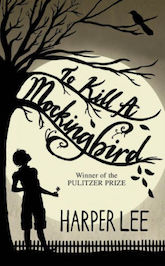 Scout, as everyone probably knows, is Harper Lee, and Dill is Truman Capote. What inspired me here was not just the book, which I love, but the actual life of (Nelle) Harper Lee. Nelle in Candy is named after her, of course. I first came across the idea of Lee as a detective of sort in the films Infamous and Capote, which weirdly came out around the same time, and both concern the writing of Capote’s In Cold Blood. Lee, his childhood friend (and before publication of her seminal novel), joined him on his investigation into the murder of the Clutter family in Holcomb, Kansas. Lee is wonderfully played in the two movies by Sandra Bullock and Catherine Keener, respectively. So “my” Nelle is very much intended as a homage for the young Scout/Harper Lee herself.
Scout, as everyone probably knows, is Harper Lee, and Dill is Truman Capote. What inspired me here was not just the book, which I love, but the actual life of (Nelle) Harper Lee. Nelle in Candy is named after her, of course. I first came across the idea of Lee as a detective of sort in the films Infamous and Capote, which weirdly came out around the same time, and both concern the writing of Capote’s In Cold Blood. Lee, his childhood friend (and before publication of her seminal novel), joined him on his investigation into the murder of the Clutter family in Holcomb, Kansas. Lee is wonderfully played in the two movies by Sandra Bullock and Catherine Keener, respectively. So “my” Nelle is very much intended as a homage for the young Scout/Harper Lee herself.
It’s probably worth saying Mockingbird is, of course, very much not a fantasy novel, though I don’t know! Boo Radley’s as gothic a character as anything out of Shirley Jackson, and—hold on, can we make this list six characters? Because Merricat, in Jackson’s incredible We Have Always Lived in the Castle is just such a wonderful—if wonderfully disturbing!—character in her own right…
(Incidentally, it once occurred to me to wonder what would have happened had Capote and Lee took a wrong turn and ended up investigating a murder in Innsmouth instead of Holcomb. It’s in a story called—you guessed it—“Cold Blood,” in an anthology called Innsmouth Nightmares… But I digress! Needless to say, though, the manuscript of To Kill a Mockingbird Lee is writing turns out quite a bit different than in our own reality.)
Little My, from the Moomin books by Tove Jansson
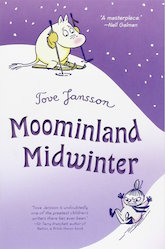 I love all the Moomin books, but I have a special love for Moominland Midwinter, the one where Moomintroll wakes up from hibernation in the middle of winter and finds the whole world transformed. The Moomin books can get quite dark, and this one does read a little on the noir side, perhaps, with the appearance of the Groke, the endless night, and the mystery of the Dweller Under the Sink… So this one definitely fed into Candy, too, I think.
I love all the Moomin books, but I have a special love for Moominland Midwinter, the one where Moomintroll wakes up from hibernation in the middle of winter and finds the whole world transformed. The Moomin books can get quite dark, and this one does read a little on the noir side, perhaps, with the appearance of the Groke, the endless night, and the mystery of the Dweller Under the Sink… So this one definitely fed into Candy, too, I think.
My favourite of the Moomin characters is Little My, the irrepressible, fearless—and nosy!—Mymble, who of course stays awake for the long winter. I’d like to think there’s a little of My in Nelle, though Nelle is more serious—and far less mischievous.
Veruca Salt, from Charlie and the Chocolate Factory by Roald Dahl
 As much as I’d like to talk about the book, I can’t help but think Veruca will always be defined by her portrayal—by Julie Dawn Cole—in the classic 1971 movie Willy Wonka & the Chocolate Factory. I actually read Cole’s memoir—I Want It Now!—a few years ago (it’s a lovely memoir), and I adore Veruca’s single-minded determination to, well, have it all and have it now. For some reason she’s supposed to be a terrible person! But I’d like to argue for a rethink of Charlie and the Chocolate Factory where Veruca is the real hero, for being ambitious and going for what she wants. Charlie, let’s be honest, is a bit of a wet blanket… So I’m Team Veruca Salt all the way. Nelle in Candy isn’t really like her at all, but I think maybe she’d secretly like to. Go Veruca!
As much as I’d like to talk about the book, I can’t help but think Veruca will always be defined by her portrayal—by Julie Dawn Cole—in the classic 1971 movie Willy Wonka & the Chocolate Factory. I actually read Cole’s memoir—I Want It Now!—a few years ago (it’s a lovely memoir), and I adore Veruca’s single-minded determination to, well, have it all and have it now. For some reason she’s supposed to be a terrible person! But I’d like to argue for a rethink of Charlie and the Chocolate Factory where Veruca is the real hero, for being ambitious and going for what she wants. Charlie, let’s be honest, is a bit of a wet blanket… So I’m Team Veruca Salt all the way. Nelle in Candy isn’t really like her at all, but I think maybe she’d secretly like to. Go Veruca!
 Lavie Tidhar is the author of the Jerwood Fiction Uncovered Prize winning and Premio Roma nominee A Man Lies Dreaming (2014), the World Fantasy Award winning Osama (2011) and of the Campbell Award winning and Locus and Clarke Award nominated Central Station (2016). His latest novels are the forthcoming Unholy Land (2018) and first children’s novel Candy (2018). He is the author of many other novels, novellas and short stories.
Lavie Tidhar is the author of the Jerwood Fiction Uncovered Prize winning and Premio Roma nominee A Man Lies Dreaming (2014), the World Fantasy Award winning Osama (2011) and of the Campbell Award winning and Locus and Clarke Award nominated Central Station (2016). His latest novels are the forthcoming Unholy Land (2018) and first children’s novel Candy (2018). He is the author of many other novels, novellas and short stories.










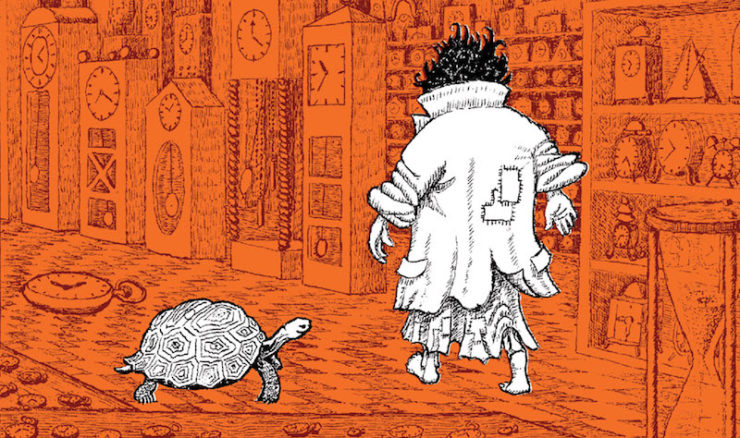
I adore Veruca’s single-minded determination to, well, have it all and have it now. For some reason she’s supposed to be a terrible person!
As another great fictional hero said:
“The point is, ladies and gentlemen, that greed, for lack of a better word, is good. Greed is right, greed works. Greed clarifies, cuts through, and captures the essence of the evolutionary spirit. Greed, in all of its forms: greed for life, for money, for love, knowledge, has marked the upward surge of mankind. And greed, you mark my words, will not only save Teldar Paper, but that other malfunctioning corporation called the USA. Thank you very much.”
Funny you say, I am currently reading Momo in the original German (I am in the part where one of the Men in Grey just left Mr. Fusi’s barber shop). Also, talking about fantastical heroines in children’s books, Inkheart (also in the original German – I am trying to practice and train my German, although it is being hard), which also has a fantastical heroine, is also one of my next readings.
Lyra from His Dark Materials.
*grin* I used to be partial to Veruca, partly because she was the spoiled (i.e. “lucky” in my mind) girl I wanted to be, but mostly because I almost always attach my affection to the most hated character(s) in any story I encounter. Incidentally, I once dreamed that she and Augustus Gloop were singing a duet of “I Want it Now.” You’re welcome.
If Pippi had been created in recent years, I wonder if anyone would have scorned her as a Mary Sue. TV Tropes calls her a “power fantasy for children” — she does what she wants with little regard for either rules or physics, and gets away with it.I always found her awesomesauce.
Cimorene in the Enchanted Forest Chronicles was the first convention-defying heroine I encountered — a princess who wanted to do all of the “improper” things and ran away to live with a dragon, brave and clever and compassionate, with little respect for arbitrary rules but great respect for people who are not obnoxious asshats. She’s 16 when her adventure begins, a bit older than the heroines above, but was the first that came to my mind.
I read the Keys to the Kingdom series as an adult and self-projected on one of its adult characters, but they’re childrens’ books and young Suzy Turquoise Blue is snarky, fearless, good-hearted awesomesauce.
I’m going to place my vote for Eilonwy of the red-gold hair, from Lloyd Alexander’s Prydain series. She starts out, like the other supporting characters, as comic relief, but her wisdom and courage (and the fact that her bauble is more than it first appears to be) make her a genuinely heroic figure by series’ end.
So nice to see Scandinavian books mentioned here, ones that I know from my childhood (I adore Kalle Blomkvist! Even if it was just mentioned in the article in a psaaing way). As it happens, I have an ex-colleague/friend who is just like Little My (in appearance as well as behaviour).
Tiffany Aching from the Discworld books. First encounter with a supernatural creature, and her reaction is to go home, research it, and set a trap so she can teach it a lesson. Also, the big reason she wants to become a witch is so that she can help others and keep them from being persecuted.
Oh yeah, Tiffany Aching is fabtastic.
If we’re allowed to include teen and up, then the cast of the Lunar Chronicles by Marissa Meyer (NOT Stephanie!) Cinder, Scarlet, Cress, Winter and even the Queen all get their own books, and Cinder’s *fabulously* dressed lady droid gets her own graphic novel series as a sequel. The entire series is “fairytales revisioned” as science fiction / space opera.
Daine from Wild Magic by Pierce really any of Pierce’s ladies RAWK, Alanna of course! and the ever intrepid Lucy Pevensie of course
+1 on Eilonwy, of course… and Harry and Aerin (Angharad) from The Blue Sword (Newbery Honor book, so definitely children’s book).
My problem with Veruca is not that she wants it all — it’s the preceding phrase in her song: “Don’t care how, I want it now!”
She demands that Daddy give her everything. She doesn’t care how. She thinks nothing of purchasing and enslaving Oompa-Loompas, for example.
So that’s not a hill I’d choose to defend.
I stumbled on Tove Jansson”s Moomins while writing a paper for Child Lit class. I found them fascinating and would often recognize characteristics of friends in the Moomins.
Muggles (yes, that’s her name) from The Gammage Cup, Caroll Kendall’s rarely mentioned masterpiece from 1959. No magic, no powers, just someone who stands up for what she believes in.
I, too, cast my vote for Tiffany Aching of Terry Pratchett’s Discworld novels.
Two of my favorites in no particular order
Harriet Hamsterbone from the eponymous serious by Ursula Vernon. She’s smart. She’s clever. She’s hearty and hardy. And she never lets being in a fairy tale restrain her in any way. Our goddaughters absolutely adore her. (It was tough to choose between Harriet and Vernon’s anthropomorphic wombat Digger-of-Unnecessarily-Convoluted-Tunnels)
Deeba from China Mieville’s Un Lun Dun. She is absolutely NOT The Chosen One. The Chosen One craps out early, and Deeba has to save the day by being, well, Deeba which means stubborn and practical.
Though not fantasy, Anne of Green Gables resonated strongly with me as a child. She flew in the face of convention, wasn’t afraid to show her emotions (and describe them in great detail), used her imagination, and she was sensitive and sweet and could hold a grudge with the best of them. She was absolutely indomitable.
As for Veruca Salt… yeah, I don’t get that. She comes across more like Ivanka Trump. White, privileged, daddy gives her everything, and exploitative of other people.
My wife, who shuns all forms of social media, says her favorite is Gillan from Norton’s Year of the Unicorn as it may be the best depiction of a woman alone in a fantasy world. I’d add Tanyth from Nathan Lowell’s Tanyth Fairport series for similar reasons and also for being one of the very few fantasy heroines who isn’t young and beautiful.
So many great choices. I’ll add Jill, from Narnia; Tenar, from Earthsea; and Sophie, from Howl’s Moving Castle.
Echoing my love for Lyra from His Dark Materians and Anne :) I loved Pippi too.
My favorite book growing up was Charlotte’s Web, and I think Charlotte can count as a heroine – clever, resourceful and a good friend :)
Thinking of more modern YA, I was quite taken with Bastille in the Alcatraz books and hope we one day get to figure out what happened with her (given Sanderon’s million other projects that take priority, I kinda doubt we will, at least not for many more years…)
Also totally agree that Veruca is not in any way a heroine. Selfishness and greed are not the same as empowerment, and ambition is not a virtue in and of itself (nor is it a thing to be discouraged) – it’s a neutral quality. What matters is what the ambition is FOR. Sure, perhaps a person with ZERO ambition or drive should work on that, but I’m not giving Veruca a pass just because she’s ‘ambitious’.